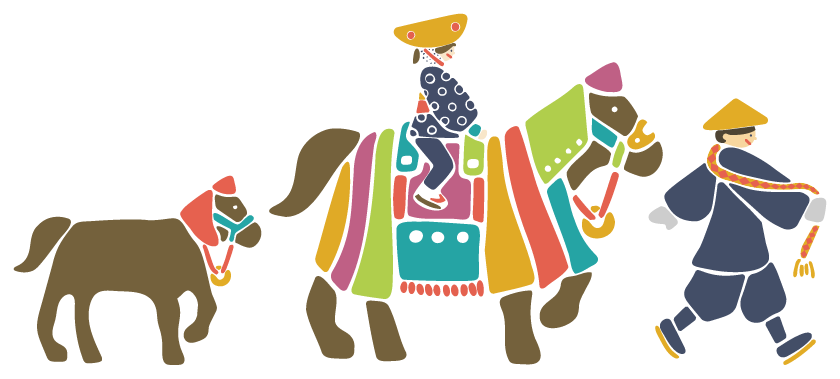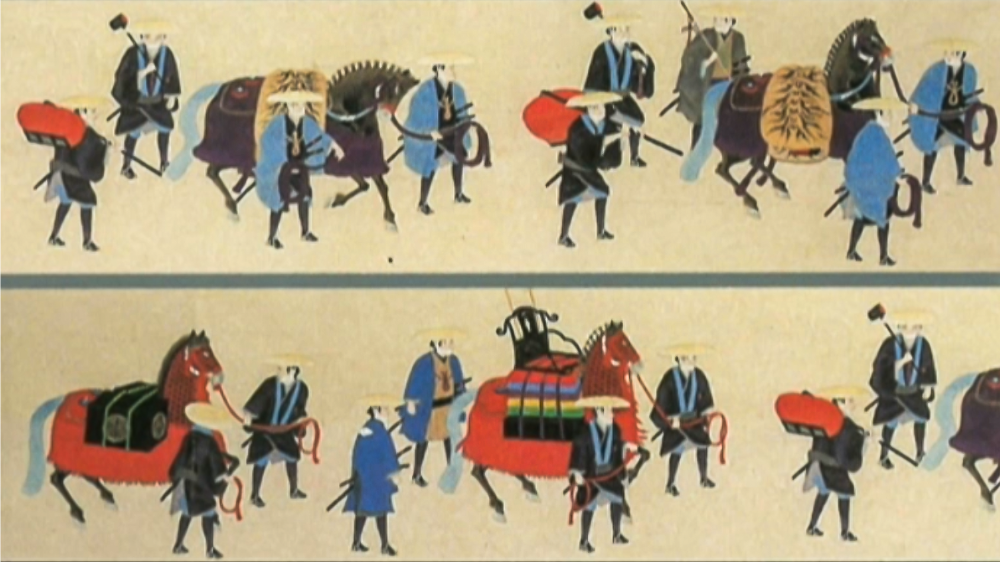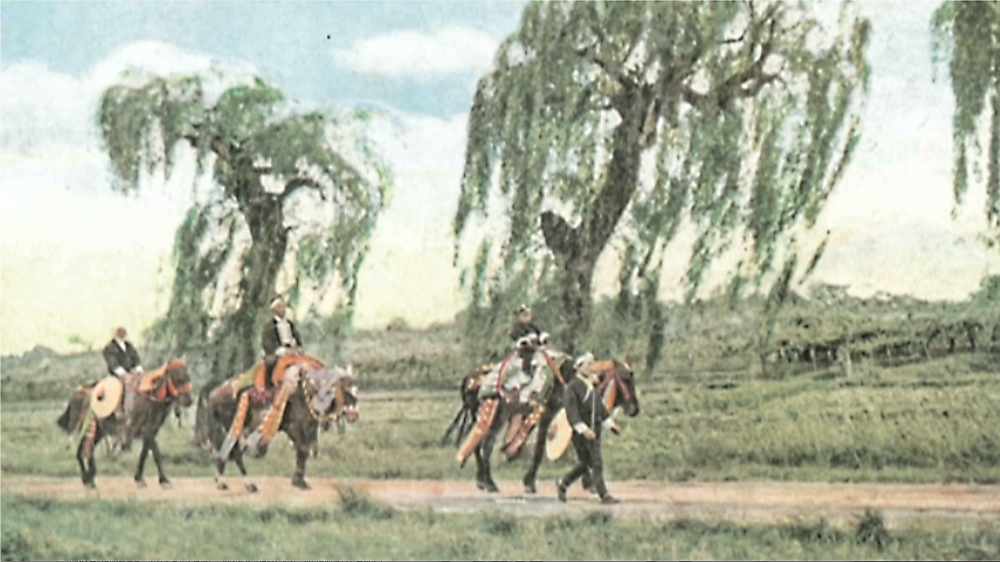history

The Nanbu Region & Horse Breeding
The prefecture of Iwate has long been known for its horse breeding. In the late 16th century, with the introduction of horse-drawn cultivation techniques, a unique style of house called a Nanbu Magariya, where people and their horses lived under one roof, emerged from a common sentiment of wanting to treat their horses like family.
And from this cultivated spirit of love for horses, the day of Tango no Sekku (May 5th), related to horses in the lunar calendar, became a time of rest during the busy farming season, where people would visit shrines said to house the guardian deity of horses, such as Sozen Shrine and Komagata Shrine, to wish for the well-being of their tired workhorses and for good health. This practice became known as Osozen Mairi, in which it became popular to lead horses adorned in ornate costumes, known as Konida Shozoku, and is said to have laid the foundation of Chagu Chagu Umakko.

The Birth of a Parade
In 1930, during a visit by Prince Chichibu, known for his love of horses, after paying respects at Onikoshi Sozen Shrine in Takizawa, a procession was formed to showcase horses at the riding grounds of Morioka Hachimangu Shrine, which was very well received. As a result, it became a tradition to march to Morioka Hachimangu Shrine after prayer, starting the following year.
Around 60 horses parade from Onikoshi Sozen Shrine to Morioka Hachimangu Shrine, covering a distance of 14 kilometers over approximately 5 hours. With this type of festival being a rarity throughout the world, in 1978, it was designated as an Intangible Folk Cultural Property by the Agency for Cultural Affairs.
The name Chagu Chagu Umakko originates from the sound of the approximately 700 bells of various sizes attached to the horses’ costumes, ringing “chagu chagu” (a kind of onomatopoeia in Japanese). In 1996, this sound was selected as one of the 100 Soundscapes of Japan by the Environmental Agency (currently Ministry of the Environment).

